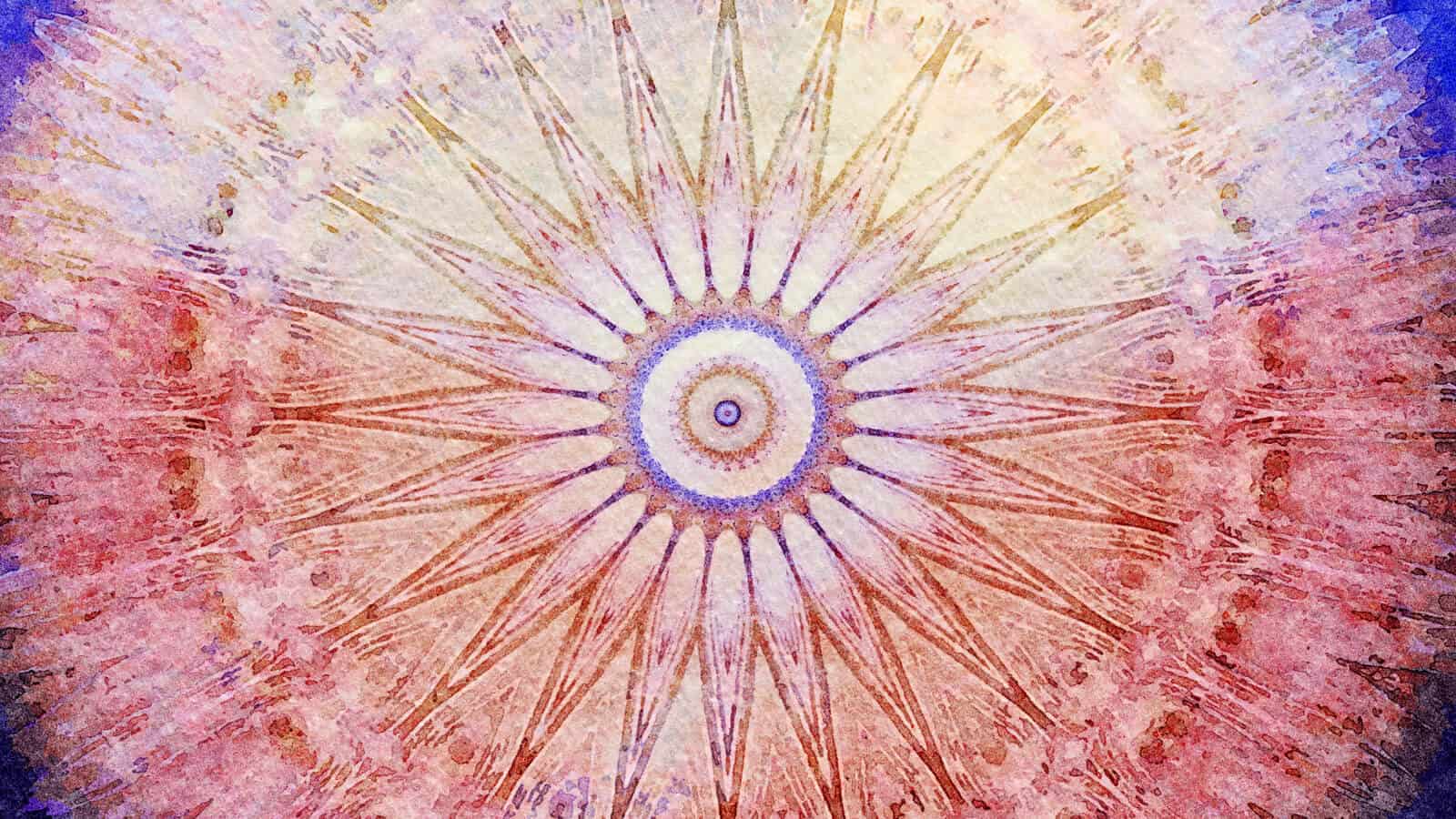“Hope is definitely not the same thing as optimism. It is not the conviction that something will turn out well, but the certainty that something makes sense, regardless of how it turns out.”Vaclav Havel
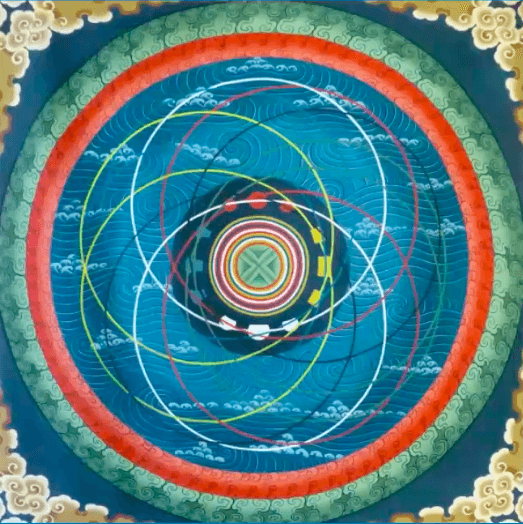 H
H
ope can be held in many ways, but it tends toward a feeling of desire for a certain thing to happen. It is to cherish a desire with anticipation. It is to want something to happen or to be the case. It is a projection.
Vaclav Havel, in his wit and wisdom, avoids the trap of projective desire and the common hubris of expecting life to give you what you want by shifting the emphasis of hope away from a dependence on particular outcomes, and toward a conscious grounding in what matters most — what “makes sense.” This is the wisdom bestowed upon Arjuna in the Bhagavad Gita — to be awake to and affirming of what makes sense for you to do — just you, in your context, with your positionality, in your time, in the situation that you face, right now.
The difference here is crucial: are we attached to a particular outcome, and therefore liable to be shaken by the course of life that strays from our well-laid plans, or are we grounded and firm in our conviction and purpose, yet open to the way in which the conversation of life will guide and shape our path as we walk it? The gap here is wide, and the path of disappointment and disillusionment is well-travelled by those who think they know where they are going.
And yet, whether we strive intently forward with our eyes on the prize or open ourselves to the dialogue of discovery while rooted in our core convictions, these distinct ways of cultivating a hopeful orientation to life share an inevitable reliance upon the truth and validity of our current perspective. Our actions, our knowing, and our being-in-the-world are co-created and co-emergent. The ways we know are connected to the ways we grow. The limits of our vision are the limits of our world, and constitute our horizon of hope.
So how do we expand our horizon? How do we learn to see through our current forms of construction and break through into broader, deeper vistas of awareness and understanding, so that we may envision a richer and more nuanced context of possibility, and enact a way of life that forms the shape of our deepest potentials?
Hope Beyond the Horizon of Modernity
It helps to see and understand the nature of the box we’re in. As human beings in an evolving world, the context of our constructions has a history, and that history shapes us along with our environment. From our personal biography and family story, to our cultural and ancestral influences, to the story of our nation, to the great human diaspora around the planet — and before that, to the emergence of life from matter to plants to animals — every scale of influence interpenetrates. It’s all informing our becoming, and the more we can include in our understanding of the historical context of our individual and collective experience, the broader and clearer our horizon of hope will become.
So much that we take for granted about the world and our experience is deeply interwoven in a tapestry of historical causality, and the section of this grand historical picture that we currently occupy has a distinctly modern hue. The world we live in, the world that shapes our sense of self and other, along with our understanding of what is real and what is possible — our world of human experience, of being-in-relation to technology, systems of production, means of transportation, modes of communication, and the ecology of media and money — continues to be deeply influenced by forces, structures, systems, and cultural influences that emerged over the last 500 years and spread around the world. We’re living in a modern box.
The modern box is constituted in part by pervasive presumptions of materialism and extreme forms of reductionism. In the incessant drive to survive, learn, change, grow, and evolve, our species has catapulted itself into a role of power and organization that continually reaches further and further into unprecedented potentials and consequences for life on the planet. We have reached this stage through the systematic reduction of complexity into terms that we can understand, model, control, and manipulate. Our ways of science and engineering enable us to achieve awesome accomplishments and creations in the realms of material production and technological development, and the shape and quality of the world that is revealed through that process is our co-creation. That constructed world is not the fullness of reality, which actually enables the evolution of that world; it is a manifestation of our demi-reality, which we mistakenly take to be ‘the world.’
The dignities and disasters of modernity that have shaped the potentials and perils of our current age are founded on and constrained by various forms of scientific materialism. This process of materialist modernization — what Max Weber called disenchantment — has resulted in a collective, existential, relational distancing from prior ways of being in the world. We have been separated from and forgetful of the rooted, grounded, embedded experience of interbeing within our broader, subtler context of emergence. The adolescent has lost contact with the child — the child who was intimately connected to the mother, and to the matrix of its creation.
Postmodernism can be broadly understood as a reaction to and critique of the reductionism, materialism, and colonialism of the modern world, especially as it spread outward from Europe and the United States. There is much to say about that (and I have done so elsewhere), but we should not allow the emergence of postmodern culture and anti-modern, anti-colonialist (and now even anti-STEM) movements to trick us into thinking that we are not still enveloped within the reductionist science, capitalist economics, and hierarchical social structures that emerged through the industrialization and globalization of the modern world. We are.
The materialist underpinnings of the modern lifeworld, which serve as the tacit background of our current meta-crisis, are rooted in the knowing mind. What is known is known within the framework of the modern world that is co-constituted in relation to that knowing mind (and the emergent relationships of knowing minds). The world that we know is destabilizing. It is collapsing, and we know it — but this knowing is different. We sense it. We feel it. We inuit it. Something is wrong.
The civilization to come — the world that is truly worth hoping for, the world we must learn to envision and co-create — will not be rooted in the knowing mind, at least not in the way that this mind of modernity has come to know and relate to the modern world. It will be rooted in the loving wisdom of the heart. To move from ‘knowing’ to ‘loving’ it is necessary to go through the door of ‘not knowing.’ Uncertainty is prerequisite. Faith and hope are paramount.
Faith: not belief in an idea or proposition, but faith as a continual connection to the ground and source of fulfillment and unfolding.
Hope: not ideas or projections based on what we ‘know,’ but the deep, heartfelt feeling that what we are envisioning, intending, and working toward ‘makes sense’ and has a basic goodness to it.
Just as the fullness of reality enables and includes our modern world of being, knowing, and doing, so the loving heart transcends and includes our knowing mind. The world we know and the self that knows it are in a process of transition into the world we hope for and the selves that must meet, recognize, and create that world.
We can see that the selves who know — the selves who are certain and self-righteous — are unravelling in the ruins of memetic tribalism and conflict. The dualities and polarities of our known world are confronting the limits and natural conclusions of their inherent opposition. Ours is a time of passionate certainty, when those on both sides of every polarity are gradually (and painfully) exhausting their presumptions of knowing in the battlefield of perspectival chaos and cultural warfare, using the post/modern means available to them (currently manifesting as the strategic, manipulative, coercive use of digital social media). This great unravelling — as dystopian and discouraging as it may seem, within the field of the known — has the potential to enable a passage, through exhaustion, into a door of ‘unknowing,’ and ultimately, into surrender: a surrender into the loving heart of humanity.
Our current epoch is one of tension, conflict, and anxiety, and our unconscious response to this overwhelming milieu is often to double-down on what we know, and to solidify our sense of identity in the quest for safety, meaning, and purpose. We engage with passionate certainty to fight for what we believe in, and whether we are inclined to fight for Black Lives in an effort to Bring Back Better, or for Blue Lives in an effort to Make America Great Again, or to numb the tension and stress by escaping into binge watching, endless scrolling, or opioids, we’re all feeling it in one way or another — and the ‘it’ cannot be reduced to any of these things, because ‘it’ is the overall human experience of the historical/evolutionary process — and we’re all in it together.
So how do we move forward, into that heartfelt, intuited world of basic goodness? We get there the same way we got here: dialectically, through differentiation and integration. We transcend and include, negate and preserve, and expand the whole to include more parts.
The Great Integration
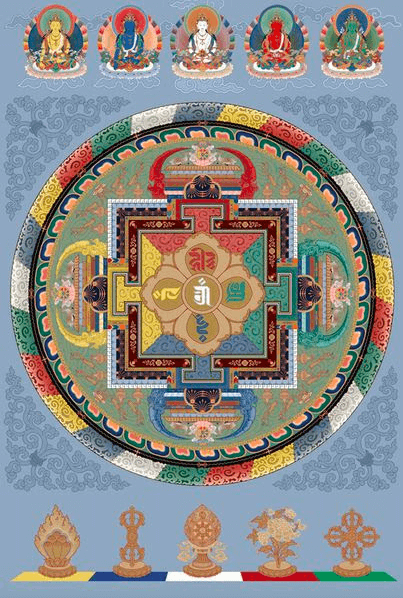
The world-in-process, in its ever expansive wholeness and completeness, unfolds as a sequence of developmental unveilings, where different perspectives process and interpret the experience of life in ways that are inherently and inevitably partial. These diverse perspectives are constituted, constructed, and refracted through particular, limited structures and architectures of perception, sense making, and meaning making, and the qualities and contents of these views and experiences are necessarily limited by the social, cultural, biological, temporal, and geographical particularities of their positionality. This fundamental diversity leads to conflict, and to a world of divergent experiences that appears as anything but integrated and harmonious. Or does it? It depends on how you look at it.
Look at the human body. Trillions of cells in coordination with each other, enabling a refined homeostasis and the integrated emergence of growth. Look at a flock of birds, attuned and entrained together, with integrated capacities for coordination and collective behavior, in sync and in flight. Nature provides countless examples of symbiosis, collaboration, and integrated, collective sense making and attunement. The trees do talk to each other, you know, and so do we. We are nature, and we can find ourselves within this all-inclusive process of differentiation and integration, but we have to do so at a higher octave, and perhaps with higher stakes. Same process, same reality, different level of complexity and consciousness. But we got this. Look at the human body. Look at a loving family. Look at a metropolitan park on a sunny Sunday. We got this.
Our hope beyond hope is simply and necessarily to enact the organic unfolding of our potential for integration. The process of realizing our potential and possibility involves finding a way to integrate the perspectives and experiences that have emerged in a way that is as healthy and coherent as possible, so that we can facilitate the manifestation of the collective potential of the process. Everything that has happened, everything that has come to be, and everything that exists, is the fullness of differentiated reality that we can consciously steward toward ongoing forms of integration, interdependence, and interbeing. Our potential future is one that is shaped by a consciousness of the process, a consciousness that understands and experiences the potentials and possibilities for overall health and sustainability in ways that enable the purpose of every part of reality to be fulfilled in whatever way is most appropriate for that part in relation to the whole.
So the question for humanity is: how to facilitate our ongoing emergence and the increasing complexity of our social world in a way that enables right relationship between different perspectives and ways of being?
Listen closely. Feel with sensitivity. You can sense the differentiation and fragmentation of our social reality reaching a breaking point, pulling toward a deep need for a course adjustment, a phase shift, or a transformation into a more stable and healthy ecosystem. There is a great coming together that needs to happen, and it is happening. The chaos is the process. The tension is the transformation. Everything we need is already here.
If we look back at the major ages and epochs we have co-created as a species, we can see the shared structures of being that need to be integrated: the nomadic tribes of our hunting and gathering ancestors and elders, who learned ways of ensuring coherence in relationship with each other (in small numbers); the agricultural, premodern cities, empires, and civilizations, who learned how to coordinate large populations through violence, hierarchies of power, religious beliefs, and cultural stories; the industrial, modern, cosmopolitan network of technology, engineering, and economics, which has reshaped the face of the planet and given birth to new vistas of thought, creation, innovation, and destruction.
And where are we now, in this time between worlds? The late-capitalist, postmodern anthropocene; the ever-accelerating, digital, globalized, fragile, planetary civilization, where we are learning how to take the reins, how to evolve consciously, and how to take responsibility for the process we are unfolding in. These are the contours and grooves of the world we’ve inherited, and these are the systems and structures we have to bring together, in harmony and coherence, within ourselves and throughout the world. This is what makes sense — personal, cultural, and social integration and consilience. This is our best and only hope.
Of all the major transitions that humanity has grown through, the move away from small nomadic groups to large scale civilization and agriculture may be the biggest and most fundamental transformation we’ve made as a species. We can therefore also see it as potentially the hardest and most important to integrate. Much has been lost, and much has been forgotten.
The integrated emergence of our future calls for an integrated indigeneity, a cosmopolitan indigeneity, an integrated nomadic cosmopolitanism. We are seeking the inclusion of indigenous wisdom in a globalized, post-postmodern context of unique individuals, enmeshed in networks of reciprocity and mutual fulfillment, and we can already see the initial bubbles of this emergence, rising playfully at the frothy edges of our social imaginaries: intentional communities, smart villages, we-space practices, post-woke workshops, online forums, metamodern politics, arts, festivals, and gatherings. It is happening, in conjunction with convergent technological disruptions that are catalyzing “the fastest, deepest, most consequential transformation of human civilization in history.” So we hope for more of the best of what we are already doing — that is the hope that makes sense, the hope we can believe in, the hope we can contribute to fulfilling.
We can feel this need — to honor the best of the systems and structures of human life, which have grown into unhealthy conflict with each other — but we can’t just do what has been done before. We can’t go back. We can’t resuscitate the old forms. We can’t put the new wine in old bottles — we have to integrate the learned wisdom of wine making and bottle making, and continue the evolution of both.
As we innovate to integrate our indigenous humanity, we must tap into our agricultural roots to foster a sustainable future: decentralized, small scale, sustainable organic farming, prioritized toward the health of soil and water is imperative. But as individuals we also have much more to do. We can’t all be farmers, and we don’t have to be. We need a vision and path for growth that is rooted in land and community, yet fluid, decentralized, and changing over time.
And just as the integration of indigenous wisdom is key to healing the collective trauma that occurred in the transition from the nomadic lifeworld to the agricultural lifeworld, the transformation of economic relations beyond the monetized, debt-based, linear, externalizing, class-constructing lifeworld of modernity is key to healing the deep trauma that has been inflicted on humanity and the planet since the industrial revolution. It won’t be easy, but we will get there. The cultivation of our love will be the measure of how much suffering we can avoid along the way.
In the light of this love we can see that the growth and planetization of our species was not an expulsion from Eden, it was an inevitable scaling of complexity. It was a melody transition in the ongoing dance of organism and environment, whose song forever changes and never ceases, even as the orchestra grows, as conductors multiply and vie for attention, and as periods of cacophony ensue, while it slowly dawns on us that there is no audience — everyone a dancer, a musician, a conductor in the Great Orchestra.
It had to grow. We could not stay in the tribes of our youth, nor can we return. That movement of the composition is complete — but like a fugue, its form returns in a different way, remembered and included at a different octave. We just have to learn how to hold it all together. Listening closely, feeling the vibrations of our fellows, we can figure out how to scale the global, fractal song of tribes into a cultural fugue of unprecedented scope and complexity. Just as the great religions formed the social and cultural imaginaries and mythos to bind us to each other during the prior cacophony of the Axial Age, our New Story of Emergence and Interbeing can hold the form of a new mythos, an all-inclusive, planetary dharma of unity-in-diversity. This is the song that will take us home, the song we hope to hear, the song we long to sing.
And just as we need to enliven the relational connections of our universal human indigeneity, continuing to differentiate, integrate, and decentralize, united in new stories and shared meanings, so we also need to include the lessons and capacities of modernity. With the abundance of agricultural civilization came specialization and new depths of inquiry and learning, and we will need to draw upon and cultivate this inquiry and learning ever more as we attempt to solve emergent problems of increasing complexity and interdependence. The medieval and modern depths of scholarly learning and science, nurtured in the best of our monastic and university traditions, which were enabled by the growth of civilization and specialization — this is not something we want to lose in our course corrections and cultural adjustments.
And what is postmodernity but the inevitable cultural creation of just such a course correction? It is a critique, a de-centering, a diversification, a widespread differentiation of cultural and social norms, attitudes, and practices, which has led us to the brink of fragmentation, and at the same time, to the cusp of a great synthesis. On the verge of collapse; at the precipice of transformation. What a view!
Postmodernity is the epoch of paradox, contradiction, and polarization; it is a Great Release, a revelation of collective shadow and trauma, and the precondition for collective human healing. It is the rejection of hegemony and homogeneity; it is the call for inclusion, equity, recognition, and solidarity. Yet what remains excluded? What is rejected, denied, and suppressed? What does the inclusive impulse of postmodernity fail to include in its prodigious critiques? Precisely its own prior interiority, the very fundamental structures of being that enabled its emergence: the truths of modernity, of traditional life, of human Being. Preserving the best of the postmodern impulse requires us to concomitantly preserve the best of our prior impulses and stages of development. We have begun the Great Release, the Great Unravelling, through the portal of critique and judgment, and now it is time for the Great Embrace, and the Great Integration, through the portal of love and healing.
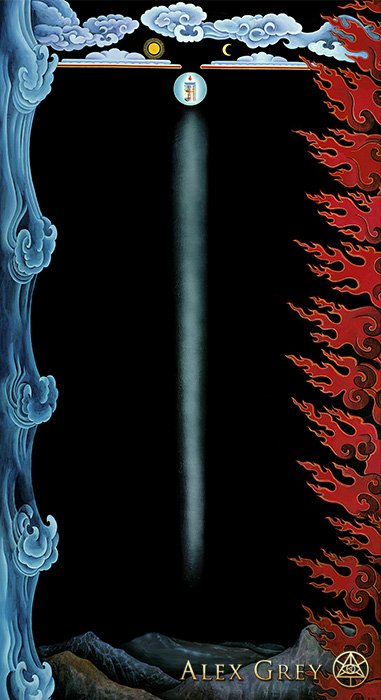
It won’t come easy. We will need to address and heal the collective trauma of the shadow side of each structure of being and community: the violence and sacrifice of our tribal foundations; the fundamentalism and dogmatism of our totalitarian civilizations; the materialism, scientism, individualism, and colonialism of our modern expansion; and the nihilism, alienation, fragility, cynicism, and inequality of our postmodern/capitalist/neoliberal lifeworld. The shadows are deep, dark, and wide, yet the light still glimmers; indeed it sparkles, dancing unceasingly, and it will win out.
It is because we find ourselves so deeply mired in the milieu of mimetic conflict, and so confused and overwhelmed by the enormity of the path before us, that we need a critical reflection on the currents of our postmodern culture so that we can discern what to negate and what to nurture — what to transcend, and what to include.
We cannot deconstruct, judge, or criticize our way forward. When our primary mode of discourse and sense-making is critical deconstruction, we are in danger of falling back on our subjective emotions as our connection to what is real. This can lead to an ideology of subjective feelings and an over-reliance on our sense of identity to ground us. Then, if our sense of identity is not reflected back to us by our environment in the way we feel it should be, or want it to be, it can be perceived as a violation. From here we get the tendency toward victimhood and fragility, which we see manifesting on social media within new iterations of culture war, with the woke warriors on one side and the anti-postmodern, anti-socialist individualists on the other. The shadow of the postmodern mind is engaged in a valiant battle with the remnants of modernist ideals. Sadly, it is a battle in which everyone loses — until we grow our way out of it; until we stop fighting. When we fight, we reify and reinforce the social constructions and identities that divide us. Fighting an ‘other’ is never the answer, and will never heal the wound of opposition or ‘us vs them’ conflict.
Including all people in the humanism of modernity is not the answer either. That abstract, disembodied, individualized self is the nexus of pathology in the modern capitalist world system. Our transformation of that system entails a reciprocal transformation of self. Not a cyber human, techno human, or digitized human, but a sense of humanity that transforms and transcends the separate, isolated, alienated, and materialist self that corresponds to Cartesian/Newtonian/Darwinian reductionism, which continues to have a deep influence on our background assumptions about ourselves and reality.
The coming integration of healthy cultural forms, in harmony with individual paths of development, will enable the flowering of a post-materialist, post-labor, post-postmodern self — from modern individualism to postmodern anomie and conflict to metamodern interdependence and interbeing. It begins here: new ideas, new meta-memes, new conceptual architectures. The ideals will spread, often in unknowing service of longer range goals, aligned with visions of networked communities of decentralized agriculture, energy production, and educational transmission, rooted in purposeful and meaningful work, with opportunities for cross-community collaboration, travel, and specialization. New centers of community life and leisure will emerge from the postmodern detritus, growing iterative experiments that shape forms of living as expressions of integral, metamodern ideals. If you look, you’ll see it’s already happening.
So what do we do now, and how do we help?
Contribute to the depolarization of values. Stop engaging in political identity battles. Be wary of groupthink. Less is often more. New births emerge from stillness and silence. We limit our relationship to values by associating them with overly reified social constructions and labels like the Left and Right. We marginalize deep principles like justice and freedom by associating them with one side of a polarity. We need to find a different tone, energy, and capacity for tapping into basic kindness and goodness — qualities and truths that transcend and include the polarities of left and right. It has to be about love, and realizing that there are always more than two choices, and holding open a meta-view that is not polarized. The meta-view is not just a more abstract or more complex perspective — it is the third way of love.
We must foster the practice of using language in a way that does not trigger partial identities and reinforce the grooves of polarity between the Left and the Right. We do not want our transmission of values, purpose, and holistic intentionality to be associated with or assimilated into any reified cultural container. We can see the polarities of culture wars playing out around us, and we have to get skillful at avoiding the tensions between thesis and antithesis, so that we may discover and embody real and dynamic syntheses of prior perspectives and ways of being and making sense. The way forward is beyond critique, defensiveness, and argumentation. Ultimately, and practically, it is about improving the health of human relationships, communication, and collaboration.
Opening to the Sacred
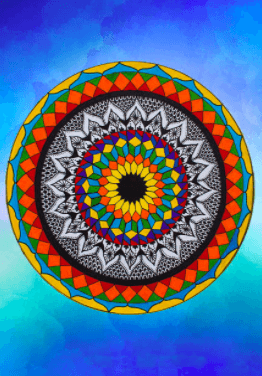
There is a deep connection between our relationship to others and our relationship to our self. Interpersonal and intrapersonal intelligence are distinct yet interdependent aspects of experience and development. Our ability to cultivate relationships that are attuned to coherence and harmony relies in part on our ability to engage in nonstrategic communication, and this ability to relate and communicate in ways that transcend manipulative, strategic communication is tied to the degree to which we consciously experience our construction of self. Freedom, openness, and acceptance in relation to self elicits these same qualities in relation to others. The more aware we are of how we are constructing our experience, and of how fluid, open, and interdependent we are with the world, the more we are able to attend to the space of relationship and allow emergence to unfold in connections of coherence and resonance. The less attached we are to our own mental content, and the less we identify with our thoughts, the more open we can be to the thoughts and experiences of others. Indeed, the difference between ‘my thoughts’ and ‘your thoughts’ can cease to matter, and what emerges is continual co-construction in the conscious container of ongoing and ever-changing relationships.
There is a strong human tendency and habit to identify with thought, to tacitly assume that ‘my’ thoughts are constitutive of ‘me.’ The more I identify with my thoughts, the more inclined I will be to defend them, to propagate them, and to ensure they ‘win’ in the battle of ideas. This effort and intention to influence others and to seek validation of the truth and goodness of our ideas (and of ourselves, by association), is largely what leads us down the road of manipulative, strategic communication. But hope springs eternal only in the garden of deep listening and mutual empathy.
Earnest dialogue that seeks mutual understanding and dialectical paths of discourse, discovery, and creative insight is an essential quality of relationship that we have to figure out how to normalize. What Jurgen Habermas calls nonstrategic communication is made possible through our working together intentionally to create relationships of communication that are ever more aligned with the ideals of open-ended inquiry. This quality of communication may help to foster, yet also partially requires, an openness in relationship to self — an openness that is facilitated by practices that allow insight into the emptiness of self, and an ability to not identify with thoughts or a static persona. In seeing the self as open and diaphanous, as a verb or process, we touch the sacred ground of being that reveals the emergent energy of ourselves and others, and establish conscious contact with the sacred presence of others (and everything).
Sacred Rehumanization is the cultural answer to the modern dehumanization we have been subject to for centuries. Every person is sacred. We will not get to where we want to be regarding racism, inequality, or injustice until we can accept the fundamental sacredness of each and every person.
One way to approach this and support this growth in perspective is through story — concrete, real, true stories. Police need to really listen to and hear from young black men in big cities. The anti-racist movement needs to really listen to, consider, and contemplate the lived experience and true stories of police men and women. Rich people need meaningful exposure to the lived and embodied struggles and joys of their unemployed, underemployed, and marginalized brothers and sisters. And the 99% can acknowledge the sometimes twisted, strange, and often unhappy bubbles of the wealthy, along with the all-too-human commonalities that they will always share and can never escape.
We need to increase our sensitivity to all forms of dehumanization — across partisan lines, across classes, and across the social constructions of race and memetic tribes. Listening is a way to truth and solidarity. We can learn to hold all stories with empathy, and allow the holding of all stories to reveal the indelible, equal sacredness of each person. Allowing concrete truths and stories to be heard and held is a vehicle of compassion, and of growing down out of abstractions — out of the constructions of whiteness and blackness, the totalizing conceptualization of ‘systems,’ and the memetic hyperobjects like fragility and supremacy that get associated with abstract categories of people. We are co-creating these cultural constructs and social imaginaries, and only we can liberate ourselves from them and use them consciously and carefully, in service of higher ideals.
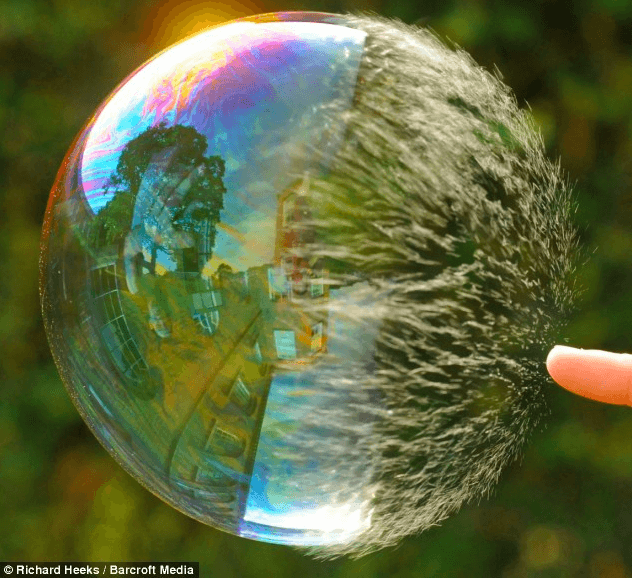
The modern mind seeks to master the art of abstraction and categorization, while the postmodern mind is losing itself in a labyrinth of labels, language games, symbols, and signifiers that are forever sliding and changing, while unconsciously confining, categorizing, and boxing us into constructions of self and other that fail to liberate us from the confines of our social worlds and the inequalities we continue to reinforce and exacerbate. Abstract, reductive, and totalizing ways of explaining people is not the way. The way is listening to the truth of experience, empathizing with experience, and learning to hold the whole of human experience in service of healing.
Human diversity means perspectival and experiential diversity, not collections of people who look different but need to conform to particular values. The earth needs rainforests and deserts and grasslands and coral reefs and raging rivers to maintain homeostasis and balance and beauty. A vision of multicultural and multiethnic bodies and phenotypes all aligned with a liberal or progressive ideological homogeneity is not human diversity. Humanity has such a spectrum of perspectives and possibilities! We need to focus not on conformity or ideology but on process: the process of education and emergence, and what will enable healthy growth, not on any particular hoped-for outcome.
It is true in education, and it is true in society at large: attention to process leads to better outcomes. A focus on outcomes leads to a distortion of process and a loss of quality in both. This is true at various scales, from teaching math to enacting our highest social ideals. We cannot be willing to sacrifice our ideals in the name of a utopian vision. We need to sacrifice our visions in the name of living in the light of love and sacred connection with every step that we take. We find the path by walking when our steps are guided by the intention to collectively engage the process, with awareness that that is the goal, and the goal is an unfolding path.
“You do not need to know precisely what is happening or exactly where it is all going. What you need is to recognize the possibilities and challenges offered by the present moment, and to embrace them with courage, faith, and hope. In such an event, courage is the authentic form taken by love”Thomas Merton
As we walk this path together we are reforming and reimagining the background assumptions and conceptual architectures of the stories we situate ourselves in — the fundamental ideas that shape how we think about the past, present, and future. There is a way of seeing time’s unfolding in the context of a whole where everything makes sense and rhymes with the sound of cosmic purpose. From this perspective, which orients toward the totality of reality and does not contract identity around any particular part of the world or experience, the hoped-for world — the world that makes sense — is a recognition, not a destination. This path unfolds in paradox, with the realization of inherent perfection, and the depth of tragic suffering, held tenderly together in the dialectic of evolution, unencumbered by linear notions of progress. We have to find a way to hold this both/and view of nonlinear, always-already/all-inclusive emergence, and honor the increasing fullness and fecundity of life without any notion of prior depravity, badness, or blame.
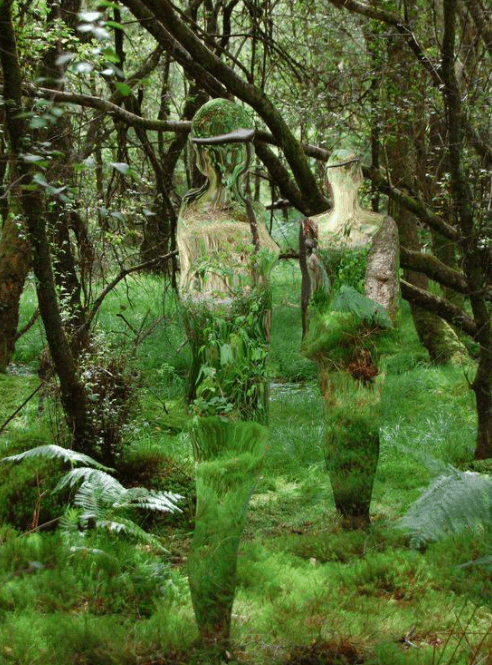
This recognition of human purpose, aligned with a directional unfolding of life on our planet, is deeply connected to our recognition of humanity as nature. Only as nature can our history be retold as the unfolding of a natural process — like an acorn to an oak, a caterpillar to a butterfly, or a child to an elder. In the midst of these transformations, the experience of crisis is real, the impending metamorphosis is radical, the former life is completely let go, and the future emergence is completely unimaginable. Yet these processes have a purpose that can be seen, known, and understood in the broader context of their existence, and so do we, individually and collectively.
Deep down we all know a better world is possible, and we all hope for some version of utopia. Ironically, it is our drive for progress, growth, and perpetual increase that has led to the intensification of experience, technology, production, and consumption, which feeds our biggest problems. Our deepest intuitions have been channeled into immature expressions. And at the same time, our misguided path of progress may end up leading us to the path of fulfillment that we seek. A major global collapse or constellation of crises and tragedies may be what it will take to enable the collective transformations we need.
We can’t yet see from the perspective of the future elder, but we can see from a perspective that is attuned to how such transformations unfold across contexts, and we can understand ourselves as expressions of a process in accordance with such transformations, and participate in it consciously. We are the caterpillars, and we don’t want to die, but there is an appropriate form of surrender that is possible, which is not passive, defeatist, cynical, or nihilist, which can and will actively nurture the present while invoking and attuning to the future.
Breathing Hope, Being What is Possible
In our intimate intrapersonal experience we can observe the tendency of the mind to wander, to go somewhere else, to separate. At the micro scale, in our delicate moments, we can experience the movement of the mind as this wandering attention. We can attend to breath, or to a particular sensation, or to thoughts flickering. The attentional system of the mind moves around, and the mind wanders into thought patterns that are not connected to our moment-to-moment, direct, embodied experience. We are often disconnected, disembodied, and out of alignment. This is what we recognize and dehabituate ourselves to when we meditate — we are bringing ourselves into alignment, and experiencing directly the reintegration of self, nature, and body. We simply recognize what’s happening naturally: breath, sensations, and the intelligence of the body and the environment. We have this ongoing experience, and we can bring these layers of experience into alignment, which allows a deeper opening, where we realize that there is an integrated field of wholeness and awareness that is perpetually present as all of those elements arise together.
Our experiential disconnection is a microcosm of what is happening at the species level, where we think of ourselves as separate from the world. We don’t realize that we are the natural world, because we’re not in alignment. We’re out of tune. We are literally killing ourselves, and it’s this disembedding, this separation, this sense that humanity is something distinct from nature that is at the root of the dysfunctions and pathologies of our current stage. It is a macro-scale, grand-historical playing out of this habitual tendency that we’re all experiencing in our own phenomenological experience. Our course correction, our individual and collective transformation, is an ongoing refinement of alignment — of presence, attention, thought, body, sensation, environment, and awareness, as a single, integrated, emergent experience.
This is the healing that has to happen. The Great Integration is manifest in the innermost presence of our individual experience. When our mind and body are aligned, we can realize that it is actually all one thing. It is this sense of alignment, healing, and wholeness that needs to be manifest at the collective level, in the ways that we relate to each other and our environment. My experience, your experience, and the becoming of the world in all its chaos and violence and beauty, is one integrated reality.
The r/evolution we need to realize our deepest hopes will go all the way to the core of our experience and understanding of self and world. The good news, and the true ground of hope, is that this is already happening, whatever else we may think is going on.
In the words of Arundhati Roy, we can affirm that “another world is not only possible, she is on her way. On a quiet day, I can hear her breathing.”
And, in the words of W.B. Yeats, we can also reply: Yes, “there is another world, but it is in this one.”
[ratemypost]About Brad Kershner
Brad Kershner, Ph.D. is a school leader and independent scholar. His research, teaching, and writing cover a wide range of interdependent topics, including education, leadership, parenting, race, technology, metamodernism, integral theory, meditation, developmental psychology, complexity, and sociocultural emergence.

